30 Dec Interesting Readings
Unveiling the Future: Top 5 Trends for Technical Writers
— Puja Mitra
In the ever-evolving field of technical writing, staying well-informed of emerging trends is essential for professionals aiming to produce content that connects with users and takes advantage of cutting-edge technologies.
Let’s explore the five key trends shaping the terrain for technical writers.
- Automation
- Artificial Intelligence (AI) and Natural Language Processing (NLP)
- Cross-Functional Collaboration
- Responsive Design for Multichannel Accessibility
- User Experience and Usability
Automation
The momentum of automation trends in technical writing has likely persisted and evolved. Instances include:
- Streamlined workflows through automated processes within Content Management Systems (CMS).
- Technical writers in certain sectors are exploring Augmented Reality (AR) and Virtual Reality (VR) technologies to create interactive documentation experiences that offer users hands-on guidance.
- Automation tools continue to aid technical writers in the automatic generation and update of API documentation, ensuring synchronization with the underlying code.
The image from Document360 shows how an automation tool helps tech writers create and update content:
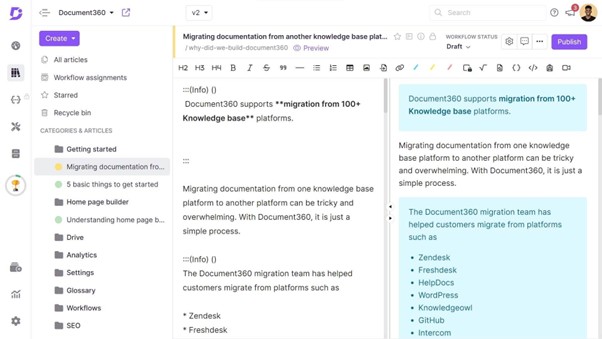
(image source: Document360)
Artificial Intelligence (AI) and Natural Language Processing (NLP)
AI and NLP technologies have been increasingly used to assist technical writers. These technologies enable automation of various tasks, including grammar and style checking, content optimization, plagiarism detection, and the generation of drafts based on the input data. Many of these tools provide a comprehensive suite of services, facilitating instant content evaluation for technical writers.
For instance, QuillBot offers a Grammar Checker feature in four languages:
- English (US)
- German
- French
- Spanish
To illustrate, if there is a need to adapt UK content for a US client, one can easily copy and paste the content into QuillBot Grammar Checker. QuillBot then suggests all possible changes, streamlining the process. The screenshot from QuillBot is a visual representation of the same.
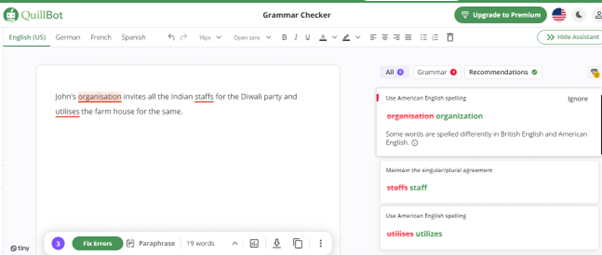
(image source: Quillbot)
Cross-functional collaboration
Cross-functional collaboration is an uprising trend for technical writers, emphasizing the importance of working seamlessly with professionals from various disciplines within an organization.
Here are some aspects of the cross-functional collaboration trend:
- Interdisciplinary teams: Technical writers are increasingly integrated into interdisciplinary teams that may include developers, designers, product managers, and subject matter experts.
- Agile and scrum methodologies: Technical writers are actively participating in Agile and Scrum methodologies, where iterative development and frequent collaboration are key factors.
- Joint planning and sprints: Technical writers are involved in joint planning sessions and sprints alongside other team members.
- User Experience (UX) collaboration: Technical writers work closely with UX teams to ensure that documentation is user-friendly and complements the design of the product or system
Responsive design for multichannel accessibility
Technical writers are prioritizing the creation of documentation that is responsive and accessible across various channels and devices. The image indicates that a technical document (user manual) is available on different platforms: mobile devices, tablets, and desktop computers.
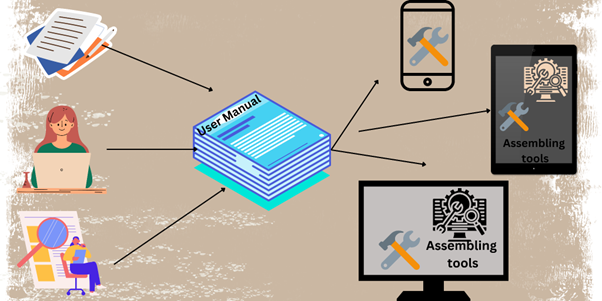
Here are key aspects of implementing responsive design for multichannel accessibility in technical writing:
- Create content that is agnostic to the device being used.
- Use structured content formats, such as XML or Markdown that allow for flexibility in presentation.
- Adopt single sourcing techniques to maintain a single master document that can be used to generate content for multiple channels.
- Implement responsive web design (RWD) principles, including flexible grid layouts, images, and media queries.
- Optimize navigation for mobile users by employing mobile-friendly menus, collapsible sections, and easy-to-use navigation controls.
- Optimize images and multimedia elements for different resolutions and bandwidths.
User Experience and Usability
Tech Writers no longer focus solely on generating content; they also contribute to user-centered design. To enhance the comprehensibility of content, technical writers leverage design components like colors, fonts, spacing, usability, and interactive visual communication. The user persona of the audience determines the language, tone, and content architecture of documentation.
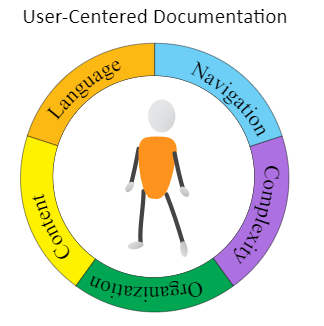
(image source: The Internet)
Conclusion
The field of technical writing is evolving rapidly, driven by technological advancements and changing user expectations. Embracing these top trends—automation integration, collaboration across disciplines, responsive design, user-centric documentation, and AR/VR integration—empowers technical writers to stay ahead of the curve.
About the Author
After completing her MA in Economics and earning an MBA, Puja commenced her career in HR management, content editing, writing, and technical documentation. With over 15 years of experience, she has become a seasoned professional in these fields.
Currently, she serves as the Managing Editor at engineering.com. She finds satisfaction in developing training programs for new hires as it allows her to assist both individuals and the company as a whole. During her leisure time, she enjoys indulging in her passion for painting.
Current Role: Managing Editor
Company: engineering.com
City: Kolkata, India
Connect at LinkedIn

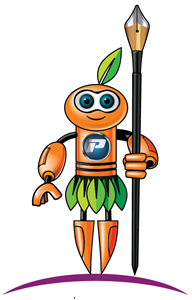



Indranil Sen
Posted at 18:26h, 04 JanuaryWell articulated and timely article. The last point, “User Experience and Usability”, is my top pick. Another trend I foresee is inclusion of graphic design and other forms of interactive content design into the work area of Technical Writers. Graduating from content, Tech Writers may need to dawn the Design hat as multiple disciples might converge in the future.